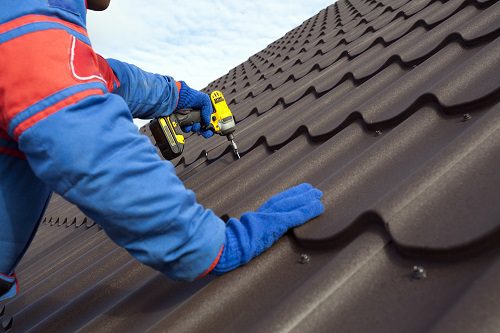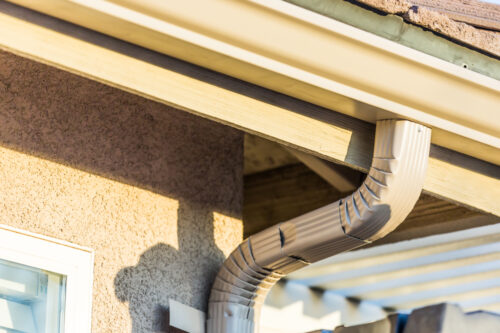Understanding the Impact of Bad Weather on Your Queensland Roof
As a professional roofer, I have witnessed the destructive power of bad weather on roofs across Queensland. The roof is like the protective skin of a house, shielding it from the harsh elements of nature. Just as our skin can become damaged by exposure to sun, wind, and rain, so too can our roofs deteriorate with prolonged exposure to extreme weather conditions.
Queensland is no stranger to severe weather events such as tropical cyclones, thunderstorms, and heavy rainfall. These natural phenomena can wreak havoc on your roof’s structural integrity, causing leaks and other damages that compromise your home’s safety and comfort.
In this article, we will explore how bad weather impacts your roof in Queensland and provide tips on how to protect your home from these potentially devastating effects.
The Effects Of Tropical Cyclones On Your Roof
Tropical cyclones can be extremely damaging to roofing materials. The high winds and heavy rain that come with these storms can cause shingles to become loose or completely torn off, leaving your roof exposed to further damage.
Additionally, debris such as tree limbs and other objects can be blown onto your roof, causing dents or punctures in the roofing material. To minimize the damage caused by tropical cyclones, it is important to take proactive maintenance measures.
Regular inspections of your roof should be conducted to identify any weak spots that may need repair before a storm hits. Additionally, trimming any overhanging trees or branches near your roof can prevent them from being blown onto your roof during a storm.
Taking these steps can help ensure the longevity of your roofing materials and protect your home from costly water damage in the event of a tropical cyclone.
How Thunderstorms Can Damage Your Roof
According to recent studies, thunderstorms are the most common cause of roof damage in Queensland. This is due to the high winds, hail, and lightning strikes that often accompany these storms.
As a professional roofer, it’s important to understand how these weather events can impact the structural integrity of a roof.
One of the main ways that thunderstorms can damage roofs is through lightning strikes. When lightning strikes a building, it can create a powerful surge of electricity that can travel through the wiring in the building and cause significant damage to the roof.
To prevent this from happening, it’s important to have your roof inspected regularly by a professional roofer who can identify any potential hazards and recommend proper roof maintenance techniques. Additionally, installing lightning rods on your home or business can help protect against lightning strikes and reduce the risk of damage to your roof.
By taking these steps, you can ensure that your roof remains strong and resilient even during severe weather events like thunderstorms.
Heavy Rainfall And Its Impact On Your Roof
Heavy rainfall is a common occurrence in Queensland, and it can cause significant damage to your roof if not properly maintained.
One of the most important aspects of preventing leaks and structural damage is ensuring that your roof is properly sealed. This means checking for any cracks or potential entry points for water, such as missing or damaged shingles, and having them repaired by a professional roofer.
Additionally, regular maintenance such as cleaning gutters and removing debris from the roof can prevent water from pooling and causing damage over time.
It is also important to ensure that your attic insulation is sufficient, as this can help prevent heat loss during colder months which can lead to ice dams forming on your roof.
By taking these preventative measures, you can avoid costly repairs and ensure that your roof stays in good condition for years to come.
Remember, neglecting the maintenance of your roof during heavy rainfall periods can have serious consequences on the structure of your home.
As a professional roofer, I advise homeowners in Queensland to be vigilant about maintaining their roofs before heavy rainfall occurs. Don’t wait until the last minute to make necessary repairs – invest in regular maintenance checks and take proactive steps towards preventing any potential damage to your home’s structure.
Signs Of Roof Damage After Bad Weather
Heavy rainfall can have a devastating impact on your roof, leaving it vulnerable to a range of problems. However, it’s not just heavy rain that can cause damage – other types of bad weather, such as strong winds and hailstorms, can also wreak havoc on your roof. As a professional roofer in Queensland, I have seen firsthand the damage that bad weather can do to roofs in this region.
If you suspect that your roof has been damaged by bad weather, there are several signs that you should look out for. These include missing or broken tiles or shingles, water stains on your ceiling or walls, and debris scattered around your property. If you notice any of these signs, it is important to get your roof inspected by a professional as soon as possible to prevent further damage from occurring.
Keep in mind that repair costs can be significant depending on the extent of the damage and insurance coverage may vary depending on the policy.
As a roofer with many years of experience in repairing roofs damaged by bad weather, I understand how stressful this situation can be for homeowners. That’s why I always strive to provide my clients with prompt and reliable service at an affordable price.
Don’t hesitate to contact me if you suspect that your roof has been damaged by bad weather – together we can work towards restoring your roof to its former condition and give you peace of mind knowing that your home is protected from the elements.
Tips For Protecting Your Roof During Extreme Weather
As a professional roofer, I have seen the devastating effects of extreme weather on roofs in Queensland. Strong winds, hailstorms, and heavy rainfall can quickly damage even the most well-built roofs. That is why it is essential to take preventative measures to protect your roof from such weather conditions.

One of the most important ways to protect your roof during extreme weather is to conduct regular roof inspections. Roof inspections are crucial as they can detect any potential problems before they become major issues. Additionally, emergency repairs should be carried out immediately after a severe storm to prevent further damage.
DIY maintenance is another effective way to keep your roof in good condition. Some simple maintenance tasks include cleaning gutters and downspouts regularly and trimming trees near your home that could potentially fall on your roof during high winds or thunderstorms.
Protecting your roof from extreme weather may seem daunting, but with proper care and attention, you can ensure that your home remains secure and protected for years to come.
Preventative measures are key when it comes to protecting your roof during extreme weather in Queensland. Regular inspections, emergency repairs, and basic DIY maintenance are all effective ways of keeping your roof in excellent condition throughout the year.
Remember that a well-maintained roof will not only protect you from the elements but also increase the value of your property in the long run. By taking these steps to safeguard your roofing system, you’ll enjoy peace of mind knowing that you’re doing everything possible to maintain its integrity and functionality for years to come.
Hiring A Professional Roofer For Repairs And Maintenance
Extreme weather conditions can have a significant impact on the roofs of homes in Queensland. Studies show that damage to roofs caused by severe weather is one of the most common reasons for insurance claims in the state. In fact, according to recent data, over 70% of all claims made in Queensland relate to damage caused by extreme weather events such as storms and hail.
To ensure that your roof can withstand harsh weather conditions, it’s essential to hire a professional roofing company for repairs and maintenance. A professional roofer has the experience and knowledge necessary to handle any issues with your roof and provide long-term solutions. Additionally, they have access to high-quality materials and equipment, which are essential for ensuring that your roof remains sturdy and durable.
However, if you decide to take on DIY roof maintenance, there are some crucial things you should keep in mind:
- Always prioritize safety when working at heights.
- Use appropriate tools and materials for the job.
- Regularly inspect your roof for signs of wear and tear.
Ultimately, proper roofing company selection is key to maintaining a healthy roof during extreme weather conditions. By following these tips and hiring a professional roofer for repairs or maintenance, you can rest assured that your home is protected against the elements.


Frequently Asked Questions
How Can Hail Damage Affect My Roof?
Hail damage can significantly impact the lifespan and structural integrity of a roof. As a professional roofer, I have seen firsthand the damage that hail can cause, including cracked or missing shingles, dents in metal roofs, and punctured membranes on flat roofs.
To address these issues, repair solutions may include replacing damaged shingles or panels, repairing leaks, and reinforcing weakened areas. It is important to note that insurance coverage for hail damage varies depending on your policy and location.
It is always recommended to review your policy and speak with your insurance provider to ensure proper coverage in case of severe weather events. As a homeowner, taking proactive measures such as regular inspections and maintenance can also help prevent costly repairs down the line.
Can Wind Gusts Cause Shingle Displacement?
As a professional roofer, it is important to understand the impacts of wind gusts on roofing materials.
Wind speed plays a crucial role in shingle displacement and can cause significant damage to roofs.
When wind speeds exceed the manufacturer’s recommended limit for the roofing material, it can lead to shingle lifting or even complete detachment from the roof deck.
This displacement can expose your roof deck to water intrusion and other environmental factors that may further damage your roof.
Therefore, it is essential to choose roofing materials that are suitable for your area’s weather conditions and ensure proper installation by a certified professional roofer.
Do Extreme Temperatures Have An Impact On My Roof’s Lifespan?
As a professional roofer, I have seen firsthand the impact that extreme temperatures can have on roofing material durability.
The heat of Queensland’s summers can cause asphalt shingles to deteriorate more quickly, while prolonged exposure to cold temperatures during winter can lead to cracking and splitting in wood shingles.
In addition to temperature, the effects of humidity should also be considered when assessing a roof’s lifespan. High levels of moisture can cause metal roofs to rust and accelerate corrosion in other roofing materials.
It is essential for homeowners to regularly inspect their roof for signs of damage and take proactive measures such as proper ventilation and insulation to ensure maximum longevity.
What Types Of Trees Or Branches Should I Avoid Having Close To My Roof During Bad Weather?
Tree trimming is an essential part of maintaining the health of your roof.
As a professional roofer, I recommend avoiding trees or branches that are in close proximity to your roof during bad weather.
This is because strong winds and heavy rains can cause these branches to break and fall onto your roof, causing significant damage.
It is important to hire professional services for tree trimming as they have the expertise and tools necessary to safely remove any potential hazards.
By taking proactive measures such as tree trimming, you can ensure the longevity and durability of your roof during extreme weather conditions.
Can Poor Roof Installation Or Maintenance Worsen Damage Caused By Bad Weather?
Common causes of roof damage during bad weather include poor installation or maintenance. It is important to ensure that your roof is installed and maintained properly by a professional roofer to prevent further damage caused by storms, heavy rain, and strong winds.
Prevention tips include regular inspections and repairs as needed, ensuring proper drainage of water from the roof, and removing any debris or clutter that may accumulate on the roof. As a professional roofer, we highly recommend investing in quality materials for your roof and seeking expert advice when faced with any issues to avoid further damage during inclement weather.
By taking these precautions, you can minimize the impact of bad weather on your roof and protect your home from costly repairs in the future.
Conclusion
When it comes to bad weather in Queensland, our roofs bear the brunt of it all.
Hail damage can cause dents and cracks in shingles or tiles, leading to leaks and potential water damage inside the home.
Strong wind gusts can also displace shingles, leaving gaps for rainwater to seep through.
Extreme temperatures can worsen existing damage and shorten a roof’s lifespan.
It is crucial to avoid having trees or branches too close to your roof during bad weather as they can break off and cause significant damage as well.
Moreover, poor installation or maintenance of your roof may exacerbate the effects of bad weather, leading to costly repairs.
As professional roofers, we understand the importance of maintaining a sturdy and reliable roofing system.
The impact of harsh weather on roofs cannot be underestimated, which is why we advise you to seek professional help if you suspect any damage after a storm.
Remember that prevention is always better than cure, so don’t wait until it’s too late!
With proper care and attention, your roof will withstand even the toughest weather conditions with ease.
So protect your home from the elements by ensuring your roof is up-to-date and ready for whatever Mother Nature throws its way!


